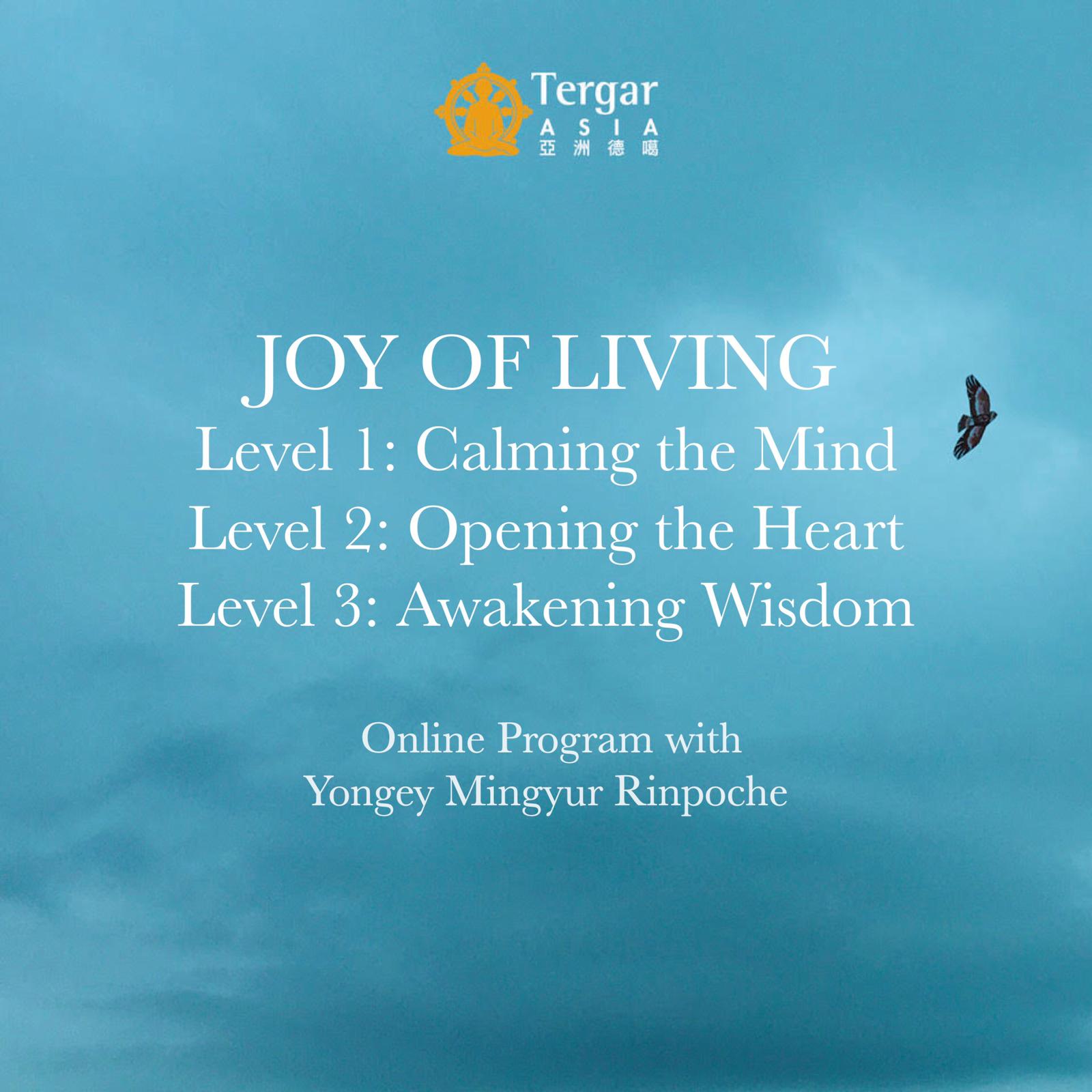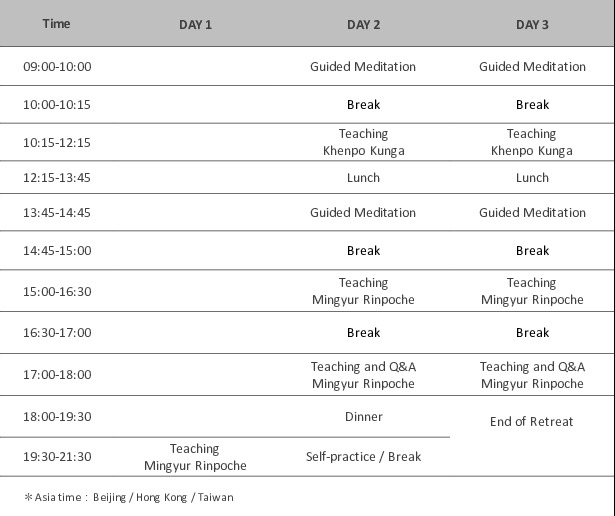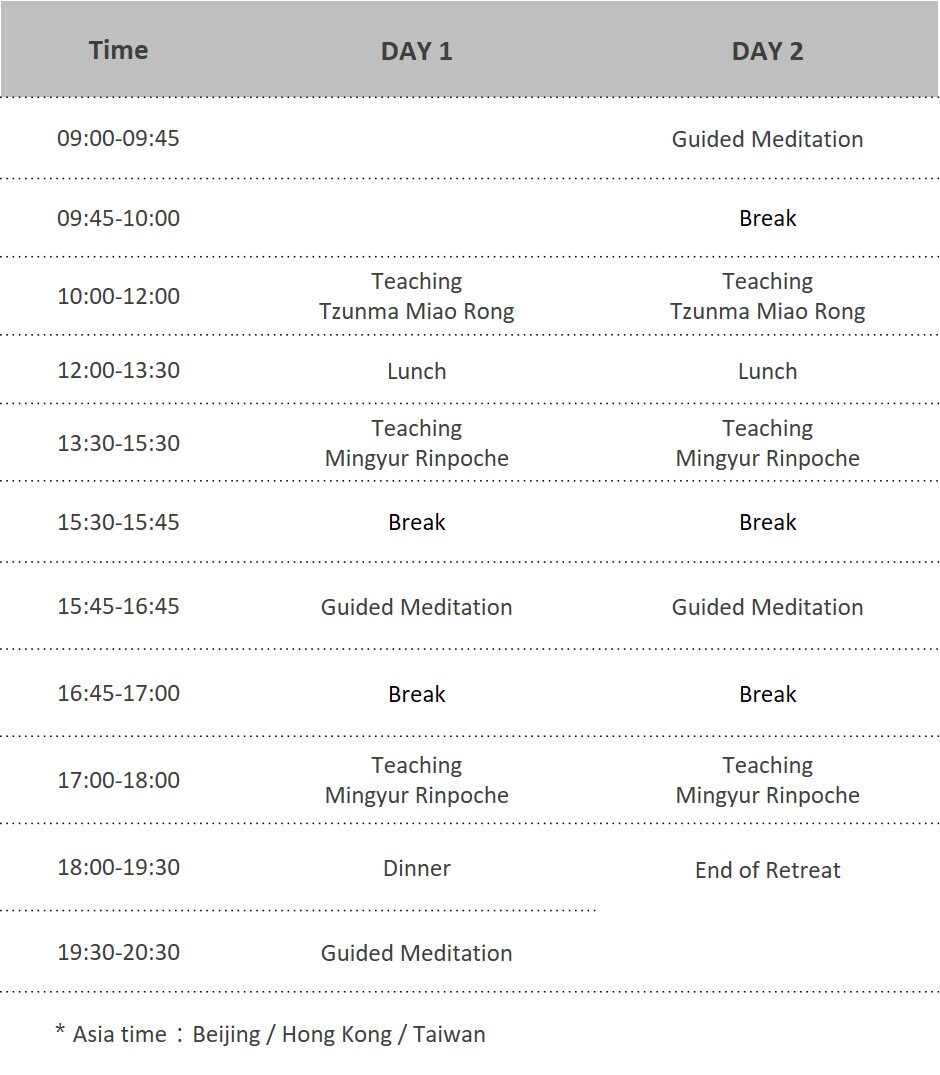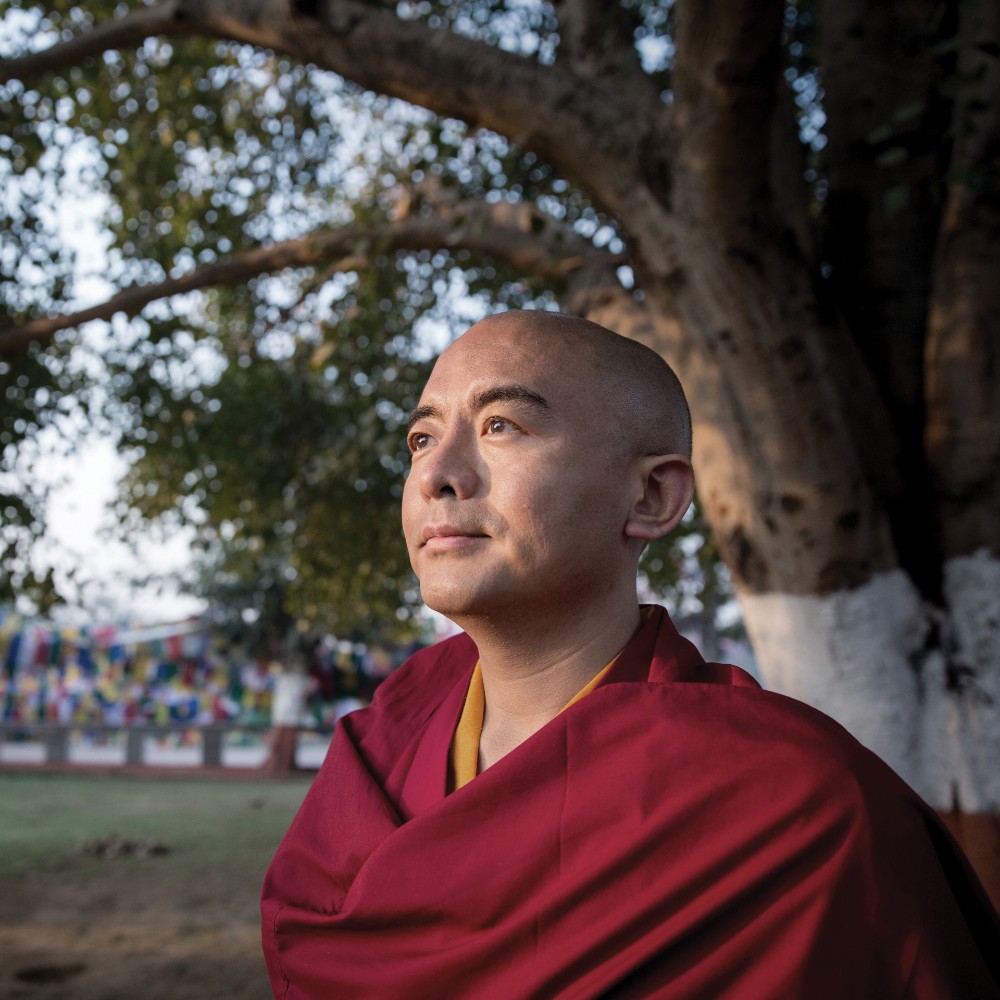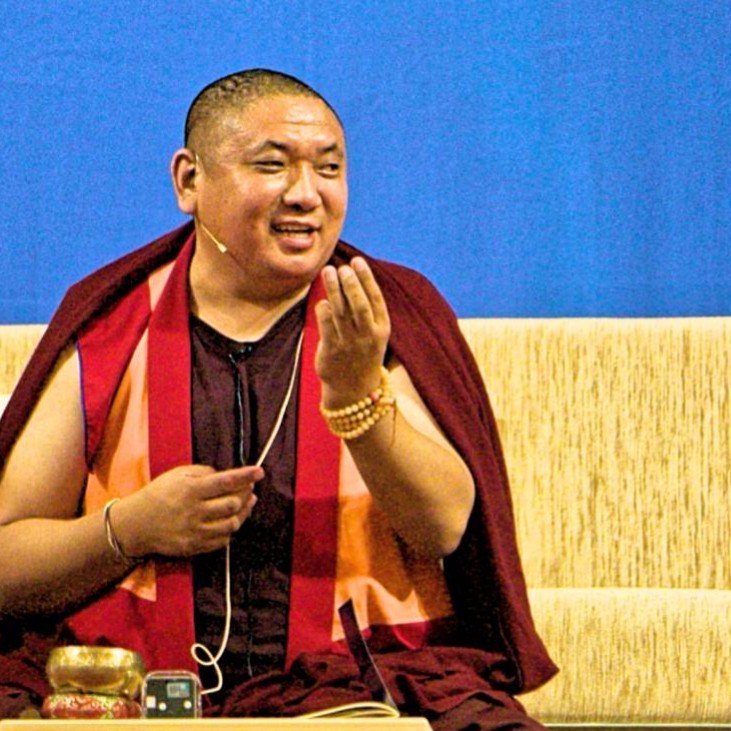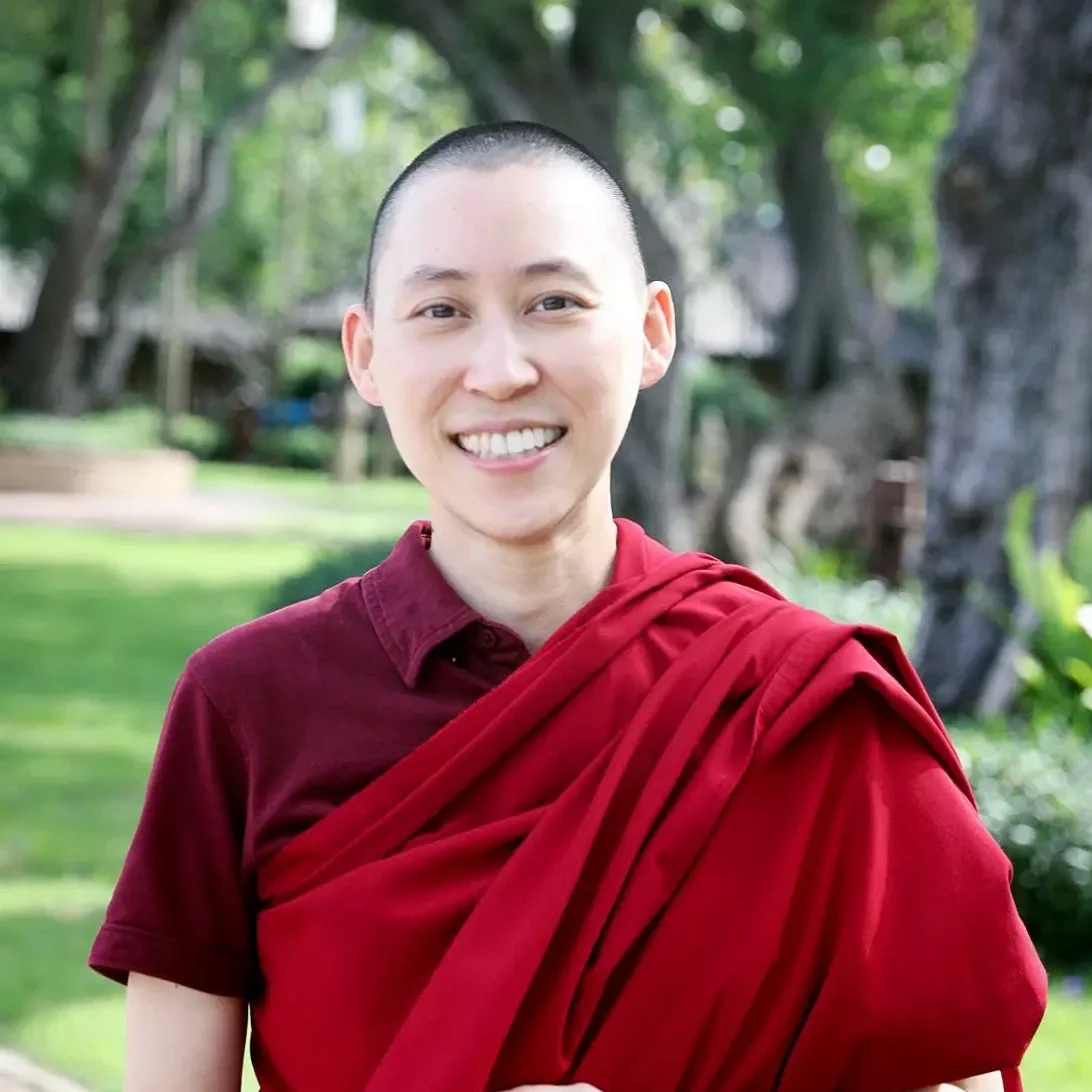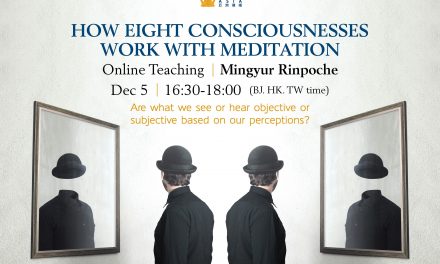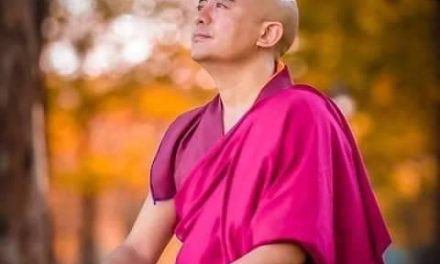Joy of Living Online Retreat
with Yongey Mingyur Rinpoche
Programme
Joy of Living Level 3: Awakening Wisdom
![]() Sept 23-25
Sept 23-25
![]()
The Joy of Living is a path of meditation study and practice that can be followed by anyone, regardless of religious or cultural orientation. In the third level of the Joy of Living, Mingyur Rinpoche offers guidance on the practice of insight meditation, a profound form of meditation that uproots the causes of anxiety and suffering.
![]()
This retreat is open only to those who have attended and completed the practice requirements for the first two levels of the Joy of Living programme.
Joy of Living Level 1: Calming the Mind
![]() Nov 4-6
Nov 4-6
![]()
The Joy of Living is a path of meditation study and practice that can be followed by anyone. In the first level of the Joy of Living, Mingyur Rinpoche teaches how awareness meditation can be used to create a peaceful mind and joyful heart. This retreat is open to all.
![]() This retreat is open to all.
This retreat is open to all.
Joy of Living Level 2: Opening the Heart
![]() Dec 10-11
Dec 10-11
![]()
The Joy of Living is a path of meditation study and practice that can be followed by anyone. In the second level of the Joy of Living, Mingyur Rinpoche teaches how meditating on love, compassion, joy and equanimity can open our hearts to the world around us and decrease the self-fixation that lies at the root of suffering.
![]()
This retreat is open only to those who have attended and completed the practice requirements for Joy of Living Level 1.
![]()
Mingyur Rinpoche will teach in English while a supplementary class by Tzunma Miao Rong will be taught in Chinese, with English translation. Translation will also be offered in Chinese Mandarin, Cantonese, Korean, Japanese, Bahasa, Thai and Vietnamese.
Participants must fully attend the course. Absence in any of the classes will mean they have to retake the course to progress to the next level of the programme.
For details on attedance prerequisites and homework requirements, please refer the JOL course chart.
JOL course chart:
https://www.tergarasia.org/wp-content/uploads/2020/08/JOL-chart_eng2.pdf
Course Time
JOL 1 and JOL 3
JOL 2
What Is Included in This Retreat?
- Teaching by Mingyur Rinpoche and Khenpo Kunga
- Q&A sessions with Rinpoche and Khenpo
- Guided meditation
What is the Joy of Living?
The Joy of Living is a path of meditation study and practice that can be followed by anyone, regardless of religious or cultural orientation. it is designed to fulfil two primary needs: one, to offer a comprehensive course of meditation training for those who are interested in learning how to meditate in a secular format; and two, to provide a grounding in basic meditation principles and practices for those who are interested in formal Buddhist practice.
The goal of this program is to help us discover a lasting contentment that is not subject to the fluctuating conditions of the external world and to nurture the qualities of wisdom and compassion that naturally manifest from awareness itself.
Though rooted in the spiritual tradition of Tibetan Buddhism, the practices taught in the Joy of Living are not religious in nature. They deal with the basic functions of the mind, such as mindful awareness and the movements toward happiness and away from suffering. In working with these qualities of mind, we gradually transform our relationship to present-moment experience, learning to approach every thought, feeling, and sensory experience with unconditional warmth and acceptance.
The Joy of Living program contains three levels:
- Calming the mind
- Opening the heart
- Awakening wisdom
Level I: Calming the mind
In the first level of the Joy of Living, Mingyur Rinpoche teaches how awareness meditation can be used to create a peaceful mind and joyful heart. Awareness meditation allows us to use any situation or experience, even difficult emotions and physical pain, as a gateway to inner peace.
Level II: Opening the heart
In the second level of the Joy of Living, Mingyur Rinpoche teaches how meditating on love, compassion, joy and equanimity can open our hearts to the world around us and decrease the self-fixation that lies at the root of suffering.
Level III: Awakening wisdom
In the third level of the Joy of Living, Mingyur Rinpoche offers guidance on the practice of insight meditation, a profound form of meditation that uproots the causes of anxiety and suffering.
FEES
The Joy of Living programme offers three courses: Level 1, Level 2 and Level 3. Please choose the course you wish to enrol for and the fee type.
There are three types of fees for each course:
USD 85 Sponsor fee: This allows us to offer a reduced fee for those on limited income
USD 35 Base fee: This fee covers the basic expenses of organizing the online course
USD 15 Reduced fee: For those on limited income
FAQs
https://cloud.tergarasia.org/s/ywX3wm10NlVQ6SS
ABOUT MINGYUR RINPOCHE
Yongey Mingyur Rinpoche possesses a rare ability to present the ancient wisdom of Tibet in a fresh, engaging manner. His profound yet accessible teachings and playful sense of humor have endeared him to students around the world. Most uniquely, Rinpoche’s teachings weave together his own personal experiences with modern scientific research, relating both to the practice of meditation.
Born in 1975 in the Himalayan border regions between Tibet and Nepal, Yongey Mingyur Rinpoche is a rising star among the new generation of Tibetan Buddhist masters. From a young age, Rinpoche was drawn to a life of contemplation. He spent many years of his childhood in strict retreat. At the age of seventeen, he was invited to be a teacher at his monastery’s three-year retreat center, a position rarely held by such a young lama. He also completed the traditional Buddhist training in philosophy and psychology, before founding a monastic college at his home monastery in north India.
In addition to extensive training in the meditative and philosophical traditions of Tibetan Buddhism, Mingyur Rinpoche has also had a lifelong interest in Western science and psychology. At an early age, he began a series of informal discussions with the famed neuroscientist Francisco Varela, who came to Nepal to learn meditation from his father, Tulku Urgyen Rinpoche.
Many years later, in 2002, Mingyur Rinpoche and a handful of other long-term meditators were invited to the Waisman Laboratory for Brain Imaging and Behavior at the University of Wisconsin, where Richard Davidson, Antoine Lutz, and other scientists examined the effects of meditation on the brains of advanced meditators. The results of this groundbreaking research were reported in many of the world’s most widely read publications, including National Geographic and Time.
Currently, Mingyur Rinpoche teaches throughout the world, with centers on four continents. His candid, often humorous accounts of his own personal difficulties have endeared him to thousands of students around the world. His best-selling book, The Joy of Living: Unlocking the Secret and Science of Happiness, debuted on the New York Times bestseller list and has been translated into over twenty languages. Rinpoche’s most recent book is In Love with the World: A Monk’s Journey Through the Bardos of Living and Dying, a rare and intimate account of his near-death experience and the life-changing wisdom he gained from it.
About Khenpo Kunga
Khenpo Kunga became a monk at a young age and began his education at Tergar monastery, where he studied the rituals, prayers, and other traditional practices of the Tibetan Buddhist tradition. At fifteen, he entered an extended meditation retreat and spent three years mastering the profound contemplative practices of the Kagyü lineage.
Following this period of intense meditation practice, he entered the renowned Dzongsar monastic college near Dharamsala in Northwest India. After studying there for eleven years and receiving his Khenpo degree (roughly equivalent to a PhD), he taught at Dzongsar college for three additional years. Khenpo Kunga’s primary teacher is Yongey Mingyur Rinpoche, though he has studied with many other revered masters as well.
In recent years, Khenpo Kunga has taught in Asia, Europe, and the United States as one of the main teachers for the worldwide network of Tergar monasteries, meditation centers, and meditation groups.
About Tzunma Miao Rong
Tzunma Miao Rong was born in Taipei in 1975. In 1990, she went to study at Fo Guang Shan Buddhist College in Kaohsiung, Taiwan. In 1993, she was ordained by Master Hsing Yun of Fo Guang Shan and received the nun ordination. In 1994, she went to Lhasa, Tibet to study Tibetan. In 1995, she studied in Leksheylin Buddhist College in Kathmandu, and followed Khenpo Tsultrim Gyamtso Rinpoche and other Rinpoches. Since 1999, she has been the CEO of Nagarjuna Institute in Nepal, responsible for supporting temples in Nepal, India and Tibet. Since 2001, she has served as the translator of the 17th Karmapa, Khenpo Tsultrim Gyamtso Rinpoche, Thrangu Rinpoche, Mingyur Rinpoche and other masters. She has been the CEO of HWA YUE Foundation since 2003. From 2005, she served in the Kagyu Monlam working group until now. In 2006, she was appointed as president of the Chungsheng Cultural Publishing Company. In 2010, she served as a member of Tergar Asia decision-making group and the head of Tergar Asia curriculum planning group. In 2011, she has become an instructor in Tergar Asia. In 2014, she established “the Five Stages of Meditation on Emptiness” course promotion team, and launched the “Treasury of Definitive Meaning” translation project. In 2016, she served as the coordinator of "Khema Bhikhuni Ordination Association" for the revival of the Tibetan nuns' precepts.


